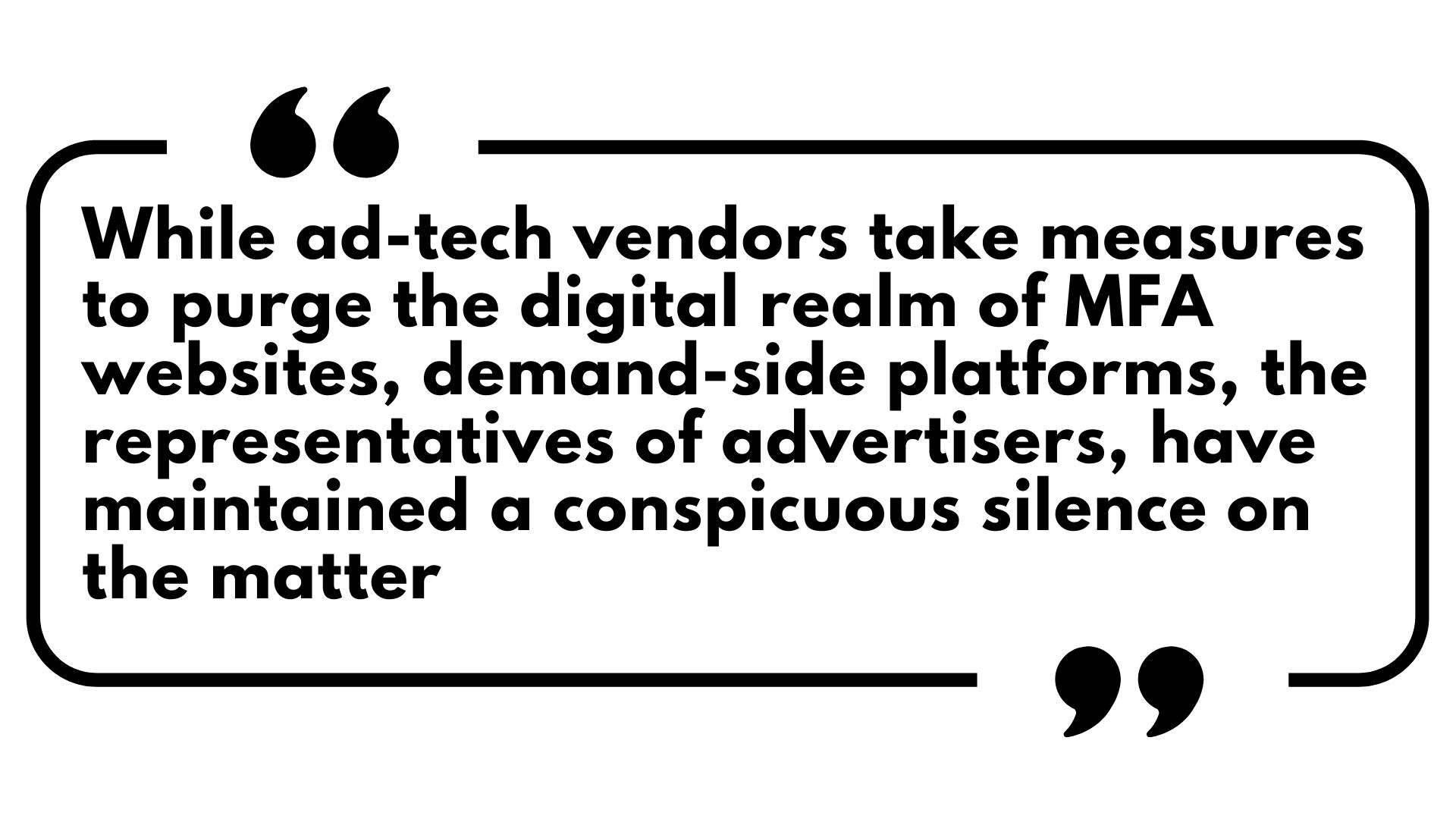Programmatic or Problematic? The Battle Against Made-for-Advertising Websites
The persistent issue of Made-for-Advertising (MFA) websites continues to cast a shadow over the digital advertising industry. These platforms, primarily designed to absorb advertising dollars, have prompted substantial concern and led to a multi-billion dollar spending spree by advertisers.
A recent industry report exposed the magnitude of this predicament, revealing that advertisers collectively poured billions into MFA websites. In response, ad-tech vendors have embarked on a mission to rectify the situation over the past few months. However, the question looms – is their concerted effort making a tangible impact?
The Made-for-Advertising Websites Saga
The saga of MFA websites is not a recent revelation; it has been a thorn in the side of digital advertising for quite some time. CNBC even created a fake website that plagiarized content, underscoring the lack of quality controls for advertisers and ad-tech partners.
This year, the Association of National Advertisers unveiled a damning two-part report. It exposed that approximately 15% of programmatic, open-web advertising dollars funneled into MFA websites, accumulating a staggering $10 billion in ad spend.

In response to the report’s first installment in June, major ad-tech vendors, including Pubmatic, Magnite, and OpenX, pledged to exclude MFA inventory from curated publisher lists sold to select advertisers. However, advertisers navigating the open web still face the challenge of sifting through MFA inventory.
Notably, both DoubleVerify and Integral AdScience, two industry giants specializing in verification and brand safety, introduced distinct detection tools. These tools aim to shield advertisers from the clutches of MFA inventory, representing a significant step in fortifying the digital advertising ecosystem.
While ad-tech vendors take measures to purge the digital realm of MFA websites, demand-side platforms, the representatives of advertisers, have maintained a conspicuous silence on the matter. This silence prompts contemplation about their stance and the role they play in mitigating the MFA challenge.
Important steps for advertisers
Here are five essential steps for advertisers to elevate their approach and drive efficiency gains:
- Active Stewardship: Advertisers must take the reins and actively steward their media investments. It’s time to move away from complete delegation to agencies and embrace a more hands-on role in ensuring the efficacy of every advertising dollar spent.
- Data Access Contracts: Establishing direct data access contracts with primary supply chain partners is crucial. Transparency and data access rights are inseparable. Advertisers should consider direct contracts with DSPs, SSPs, and Ad Verification vendors to maximize transparency and control over data.
- Agency Partnerships with Full Transparency: Construct agency partnerships that provide complete access to data and full transparency of websites purchased on media buys. Understanding the distinction between the agency acting as an agent or principal is vital. Advertisers need clarity on when agencies are obligated to act in their best interests and ensure contractual transparency.
- Quality Over Quantity: Prioritize quality media buys over chasing low-cost inventory. Cheap CPM buys may lead to non-viewable and non-measurable media purchases. Striking a balance between cost-effectiveness and ad quality—ensuring viewability, fraud-free interactions, and brand safety—is essential for sustainable advertising efforts.
- Exclusion of “Made for Advertising” Websites: Demand the exclusion of “Made for Advertising” (MFA) websites from media buys unless explicitly wanted or needed. Advertisers should assess if MFA sites align with their brand suitability standards for content and user experience. Clearly defining the tolerance for the inclusion of MFA inventory in campaigns is essential.
As the industry grapples with this pervasive issue, the battle against MFA websites unfolds, and the efficacy of these countermeasures remains to be seen. The shadows cast by MFA websites persist, challenging the industry to innovate and fortify its defenses in the ever-evolving digital marketing landscape.
This article is written by Priyanshu Pande, Business Consultant
Priyanshu Pande
Business Consultant | Storytelling | Sports Marketing | Brand Marketing
Priyanshu is a passionate storyteller who has a penchant for building brands and a knack for understanding spreadsheets. With over 16 years in brand & sports marketing, he has worked on all facets of sports business in India – from formulating sports marketin strategies and activating brands to leverage sponsorships to managing atheletes & marketing sports teams & bodies.
Priyanshu’s driving force at work is the obsession to bring brands to life & closer to consumers with the power of design, right messaging & apt medium.


